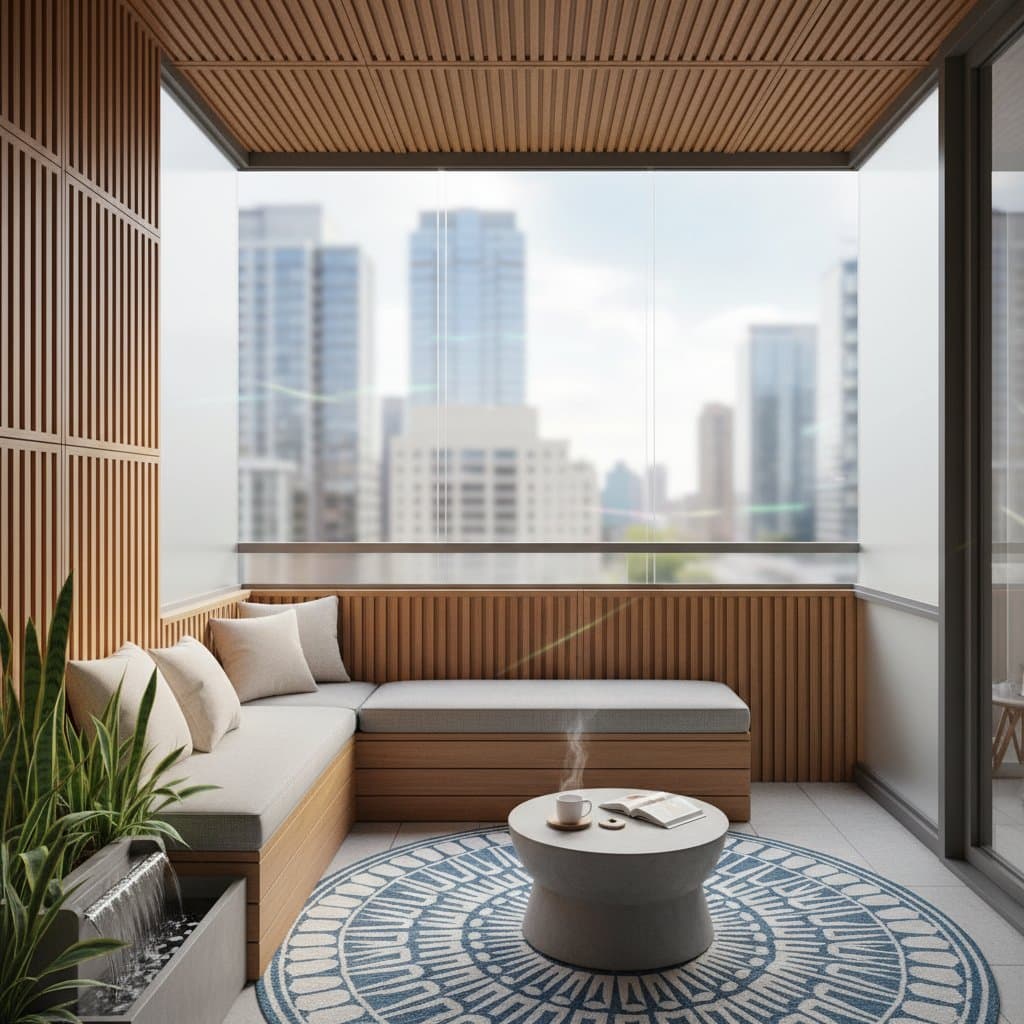Acoustic Panels: Reduce Balcony Noise and Enhance Privacy
Urban environments often deliver unwelcome auditory intrusions. Vehicle traffic, nearby construction, and conversations from adjacent units can disrupt balcony relaxation. Individuals seek outdoor respite yet encounter amplified voices to compete with ambient clamor. This article addresses that challenge by detailing acoustic panels, their functionality, and precise installation methods to foster quieter, more secluded balcony experiences.
Understanding Acoustic Panels
Acoustic panels consist of specialized boards crafted from materials such as open-cell foam, dense felt, or mineral wool fibers. These components capture sound waves, converting vibrational energy into minimal heat and preventing reflections that amplify noise. In balcony applications, panels mitigate reverberations from hard surfaces, attenuate passing traffic sounds, and confine spoken words to the intended area.
The advantages extend beyond noise suppression. Panels establish boundaries for sound, shielding outdoor gatherings from external disturbances while preserving internal acoustics for focused activities like reading or teleconferencing. Strategic placement of even modest-sized panels yields measurable improvements in auditory comfort, particularly in densely populated settings.
Essential Tools and Materials
Effective installation requires straightforward yet reliable items. Assemble the following:
- Acoustic panels: Select models certified for exterior exposure, with thicknesses ranging from 1 to 2 inches (2.5 to 5 cm) to optimize absorption without excessive bulk.
- Mounting hardware: Opt for corrosion-resistant options, including stainless steel screws, brackets, or heavy-duty adhesive hooks rated for outdoor conditions.
- Measuring tape and level: Ensure accurate dimensions and alignment for uniform distribution.
- Protective gear: Gloves and a mask protect against irritants in fiberglass or wool-based panels.
- Additional supplies: Weatherproof sealants, edge trims, or suspension wires for adaptable configurations.
Preparation with these elements streamlines the process and promotes durability.
Installation Process
Proceed methodically to achieve optimal sound dampening and structural integrity. Each phase builds toward a cohesive setup.
1. Assess and Design the Layout
Begin by recording the dimensions of target surfaces, such as perimeter walls or railings. Allocate a minimum 1-inch (2.5 cm) gap between panels to facilitate airflow and prevent moisture accumulation. Draft a schematic emphasizing zones exposed to primary noise origins, including street-level traffic or adjacent structures. This planning maximizes coverage efficiency.
2. Select Appropriate Panel Variants
Prioritize panels engineered for outdoor resilience, featuring UV protection and water-repellent coatings. Foam variants excel at capturing mid-range and high-frequency sounds, such as voices or sirens, whereas mineral wool configurations address low-frequency rumbles from engines or machinery. Combining types provides comprehensive spectrum control tailored to urban acoustics.
3. Prepare Mounting Surfaces
Remove debris, grime, or flaking coatings from installation areas to ensure adhesion. Allow surfaces to dry completely, as moisture compromises bonds. For drilled attachments, evaluate substrate strength; masonry bits and anchors suit concrete, while clamps secure to metal without penetration.
4. Secure Panels in Place
Don protective gloves prior to manipulation, especially with fibrous interiors. Initiate mounting at central points, progressing symmetrically to maintain equilibrium. Apply pressure to adhesives for a full 30 seconds per unit, or tighten screws with washers to distribute load and avert fabric damage.
5. Address Seams and Edges
Apply flexible, outdoor-grade caulk to interstices between panels, minimizing acoustic pathways. Incorporate fabric borders for aesthetic cohesion. In suspended designs, position panels with slight overlaps to curtail sound transmission at junctions.
6. Incorporate Supplementary Absorption
Should residual sharpness persist, layer supplementary thinner panels in echo-prone corners. These areas amplify bass frequencies, and added density refines the sonic environment without overwhelming the space.
Key Safety Considerations
Prioritize precautions throughout the project. Wear gloves and respiratory protection when sectioning mineral wool to avoid inhalation of particulates. Employ sturdy platforms for elevated work, ensuring stability before each ascent. Refrain from obstructing ventilation openings, utility access points, or proximity to ignition sources like barbecues.
Regular inspections prevent hazards; verify anchor integrity post-installation and after weather events.
Resolving Common Issues
Uneven noise abatement often stems from unsealed voids or glossy reflectors like tile floors or transparent barriers. Introduce absorptive elements, such as area rugs or draped fabrics, to counter rebounds. Sagging installations signal insufficient support; reinforce with additional fixings or opt for reduced-weight alternatives to restore tautness.
Monitor performance over initial days, adjusting as environmental factors evolve.
Upkeep and Preservation
Sustain panel efficacy through routine attention. Weekly gentle brushing removes surface particulates, while quarterly fabric removals permit hand-washing in diluted detergent. In inclement periods or absences, detach via releasable mounts for indoor drying in ventilated, dim locales.
Stack stored units horizontally, shielding from compression that could deform absorptive properties. Annual deep cleans preserve longevity.
Cost and Timeline Estimates
Quality exterior panels range from $8 to $15 per square foot, reflecting material robustness. Ancillary hardware incurs minimal expense, typically below $20. A compact balcony project spans two to three hours, empowering self-directed customization over professional fees.
Budget allocation favors durable selections, yielding sustained returns on acoustic investment.
Professional Assistance Criteria
Engage experts for interventions involving load-bearing modifications or overhead suspensions. Inquire about compliance with moisture resistance standards, flame-retardant qualifications, and substrate-specific fasteners. Acoustic specialists employ decibel metering to pinpoint and neutralize dominant frequencies.
Such collaboration ensures code adherence in multifamily structures.
Seasonal Maintenance Protocols
Initiate evaluations at seasonal transitions. Inspect for water ingress, fastener loosening, or material degradation. Renew sealants on lifting perimeters and prioritize dehumidification in winter to thwart fungal growth. Summer routines include shading to mitigate UV-induced discoloration.
These habits extend service life amid fluctuating climates.
Achieving Lasting Balcony Serenity
Implementing acoustic panels reclaims balcony usability, converting cacophonous corners into havens of repose. Readers equipped with this guidance can execute enhancements confidently, enjoying amplified privacy and diminished distractions. Regular refinements align the space with personal rhythms, elevating everyday outdoor engagements.


